Rachel Neumeier's Blog, page 176
March 2, 2020
Once again struck by the ephemerality of life
So, my boss’s house was struck by lightning last night. The family was out and they’re all fine. The house burned to the ground, and the pets died in the fire.
This makes me want to leave work, go home, and pet all my dogs for the rest of the day.
It also puts my current problems in perspective.
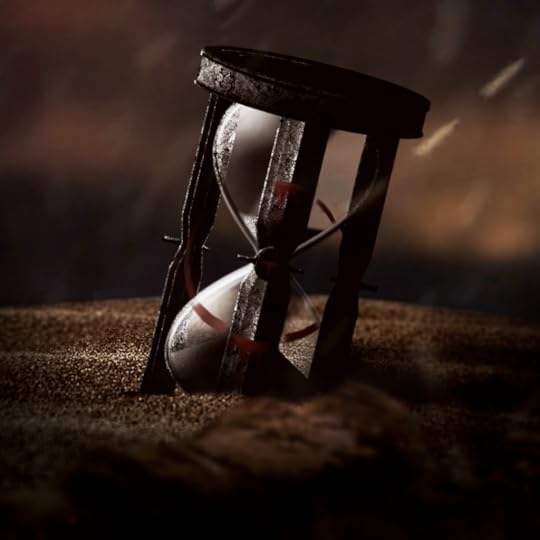
Please Feel Free to Share:








February 28, 2020
Just noting a sale —
Robin McKinley’s The Hero and the Crown is $1.99 on Kindle today.
don’t have any idea how long that will last, but just fyi.
Which cover do you prefer? I think the top one is by far the best, but it’s the edition I have, so that may just be familiarity. I think the horse absolutely belongs on the cover, though, and for some reason he’s been removed on the later edition covers.
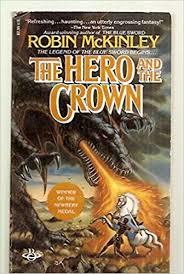
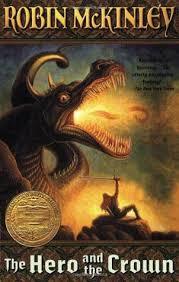
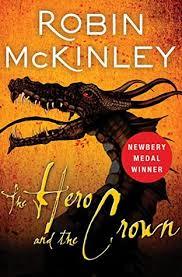
Please Feel Free to Share:








February 26, 2020
Monstrous protagonists
From tor.com, this: Six Books with Monstrous Heroes
I’ve read one of these — Jo Walton’s Tooth and Claw. I’m often up for a nonhuman protagonist, whether technically monstrous or otherwise, and it seems to me there are quite a few more who feature in books I’ve read. Let me see.
Okay:
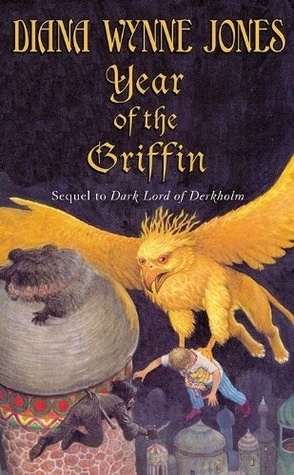
I love Elda! I mean, griffins in general, but Elda is especially delightful among griffins who feature in school-buddy stories. That may possibly be a smallish category. Anyway, this and the prequel, Dark Lord of Derkholm, are some of my favorite stories by DWJ.
Another griffin:
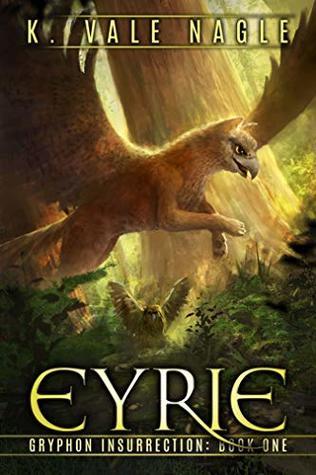
I didn’t find that one as compelling, but then it’s hard to compete with DWJ. The griffins — gryphons — are certainly more diverse in this one. I am still delighted and amused whenever I think about the peacock-based griffins in this series
In fact, if you’re interested in griffins, then K Vale Nagle has a Guide to Gryphons Reading List that you have to check out.
Meanwhile, if you’re interested in nonhuman protagonists in fantasy, then there’s this post: How to write nonhuman characters. Good advice:
Talking animals will, of course, have been born in their current form. As such, it will be natural for them to think and act in ways that differ from human customs. You’ll want to research the behavior, the abilities, and in some cases, the social structure of these animals (if you’re dealing with a social animal) so that you can blend human-like thoughts and intelligence believably with the animal form in question. Try not to give an animal some personality quirk that simply doesn’t fit its nature.
By all means, give the nonhuman character thoughts and impulses and so on that suit the character in question. Definitely don’t make your nonhuman character psychologically indistinguishable from a human person, or what is even the point? Also:
If your character is either an animal or part animal, that will certainly affect their body language.
You know who does body language really well — Martha Wells for the Raksura series. She gives the Raksura catlike reflexes, which works so well to make them come across as not quite human when they are psychologically very much like human people (except much less easy to physically intimidate). I get that the Raksura are not a typical fantasy nonhuman species, but the same basic principles apply to griffins and dragons and whatever.
Of course if you decide for no particular reason that your griffins are also essentially fire elementals, that may nudge your story off in directions you didn’t initially expect …

Please Feel Free to Share:








Mark Twain’s ghost
Here’s a fun one: How Mark Twain’s ghost almost set off the copyright battle of the century
Early rumors of his death may have been grossly exaggerated, but eventually death did come for Mark Twain. For most authors, that moment—that is, the moment of death—is a natural time to stop writing. But in 1917, seven years after Twain’s demise, reports emerged that he had dictated a new novel, via Ouija board, to a receptive medium.…
…Just after Hutchings and her publisher got the book to market, Twain’s estate and his publisher sued to stop it, kicking off one of the more unusual intellectual property cases of the 20th century.
Click through if you’re interested. I’ll just note that the Twain estate made a clever argument and the so-called medium decided pulling the book was the wiser course. The title was Jap Herron, and the paper edition is quite rare today and worth a pretty penny, so if you’ve got a copy, keep that in mind.
The ebook is easily available, it turns out, if you happen to want to look at it.
Please Feel Free to Share:








February 25, 2020
A new way to define “tough act to follow”

That’s from @tomgauld on Twitter. Ha ha ha! If she thinks fast, she’ll come up with something, right? What would YOU say? It would be nice if you came up with something true, catchy, and not liable to get you arrested.
Here’s another one, same cartoonist:

I notice he’s got a book coming out in April: Department of Mind-Blowing Theories. All right, I’ll follow on Twitter for a while and take a look at the book when it appears.
Please Feel Free to Share:








Recent Reading: Cry Pilot by Joel Dane
Okay, so, Cry Pilot is military SF, but wow, is it atypical.
I mean, sure, Cry Pilot ticks off a lot of boxes – a young protagonist going through military training, what could be more typical of military SF, obviously – but the world surrounding the protagonist is so distinctive that the whole story steps sideways into a subgenre that shares space with dystopian SF rather than space opera.
It’s not exactly a dystopian future. Not exactly. Or probably it’s not a true dystopia. It’s more that the parts we see are not the nicer bits, and the government or quasi-government in charge is probably pretty oppressive, although it’s hard to tell just how oppressive in daily life for ordinary people. Probably not that much?
The setting: So, Earth has been ecologically devastated. Not by anything as utterly cliched as global warming, so that’s a major plus; nope, much more believably, by large-scale war fought by, get this, semi-autonomous weapons cyborged with enough biological components that they possessed instinctive drives to achieve their objectives and could self-repair. Because what could go wrong with that, right? So evidently during the course of a lot of trouble and warfare, all global ecosystems were completely ruined. All this is way in the past.
Now the ecosystems are being repaired via a process called not terraforming, but terrafixing (I love that term), a process which utilizes autonomous processes to resurrect long-extinct animals and plants. This is a creepy process that we never see at close range, plus the terrafixing processes constantly uncover long-defunct bioweapons, mistake them for legitimate plants or animals, and resurrect them in new and novel forms. This, needless to say, causes a certain amount of trouble. It is these “remorts” that occupy many soldiers. The basic problem faced in this book is a new kind of remort which is nigh-unto-unstoppable and looking like it might turn into an extinction-level problem.
Other things besides remorts also occupy soldiers, such as putting down any patriot group or any religion that shows signs of becoming too important to people. Because the government here is, at least on the surface, as far as we can tell, a sort of diffuse entity consisting of somewhat ruthless but possibly somewhat altruistic and competent corporations. I must say, I have certain questions about this rectitude of this government. Our protagonist does not seem to. There’s a particular sentence produced unironically near the end of the book – I’ll give you enough of a lead-in for context –
… And I’d light the world on fire for Rana, for Ting, for Jag and M’bari and Shakrabarti. Even for Cali. Hell, especially for Cali. That’s a dangerous, small-minded way to live. It’s the path of the insurgent, the nationalist; it’s the creed of patriots who only care about their own little tribe. That’s how the SICLE War started, with a loyal, loving urge that would’ve destroyed the world if the rational stewardship of the corporations hadn’t saved us.
Uh huh. Those rational corporations, such wise stewards. Our protagonist, Maseo Kaytu, does appear to believe this. I think he does. He seems to be a pretty honest narrator, so if he’s unreliable, it’s because he only sees and knows a certain slice of the world. He’s had enough to think about in his life without questioning official verities. Plus for various reasons he’s invested in believing that The Corporations Know Best. I imagine that like me, many readers may suspect there’s more to that story. Especially with the ruthlessness of the corporations on full display from time to time.
Okay, so, good things:
a) The world is built as much with flavor as it is with concrete details. I mean, it’s not lacking in concrete details; but there’s so much and nearly all of it is out of sight. One thing Joel Dane does extremely well is convey the flavor of the world without ever stopping to dump information on the reader. A paragraph of history now and then, occasionally a bit of a flashback, but so much is left unsaid that the wider world remains somewhat out of focus. We know that some time ago three AIs uplifted, did a lot of mysterious stuff, and apparently committed suicide. (Or did they? I immediately wonder.) We know that faster-than-light travel is still considered impossible but there are ships out in space. Called Flensers. Evocative name, but we’re not sure why they’re out there or what they do. We know that everyone lives in immense urban high rises, the kind that are sometimes called arcologies, and that there is nothing left of any natural ecosystem. We know that foods are synthetic. We know there’s a vast, vast gulf between the haves and the have-nots. There’s a lot we know, but the reader is going to be very aware that there’s so much more.
b) The protagonist. Maseo Kaytu is an interesting guy with an interesting backstory. Ting is a super-interesting character with a super-interesting problem. Gift. Curse. Whatever. You can do weird and wonderful things with genesplicing, I guess. I like all the people on Kaytu’s team. They’re pretty one-dimensional, but they’re really well-drawn one-dimensional characters. Quick, snappy dialogue.
c) The plotting is good. I mean, there aren’t any really WOW DIDN’T SEE THAT COMING twists, but it keeps you turning the pages. I would have been disappointed if certain things hadn’t fallen into place, but they did, so that was fine. Various characters die, including one I rather liked, but this is military science fiction, after all.
d) Nice style, both somewhat gritty and decidedly poetic, often both at the same time. As here:
A neurosurgeon sprays me into thera-sleep on the transport from Belo City. I lose myself in anxious dreams, then wake on a mattress made of starlight and hope. The medical devices around me purr reassuringly, like angels humming a lullaby.
Less great things:
a) First-person present-tense narratives are never going to be my favorite. If the style is well done, I get used to it and it doesn’t get in the way, much. Joel Dane did a fine job with that style and with Kaytu’s voice.
b) If we paused the action for a long exploration of the ecological situation, that would be great. I’m aware not everyone necessarily feels like pausing for a good look out the window at the natural scenery when reading a tense military story, but I was dying to know more about the actual results of the terrafixing. I gather people can’t actually live out in the new ecosystems, at least not yet.
c) Honestly, no, that’s it. There isn’t anything to point at as a real flaw to this story, just features that might or might not appeal to a specific reader. I liked it a lot and I expect I’ll go on with the second book, though perhaps not until the third comes out, which will evidently be in July.
I’ll note in passing that this novel got a good review from Sherwood Smith on Goodreads and has a laudatory quote from CJ Cherryh inside the cover.
Please Feel Free to Share:








February 24, 2020
Transporters are a menace
Here’s a fun article: THE TERRIBLE TRUTH ABOUT STAR TREK’S TRANSPORTERS
There is, admittedly, some ambiguity about precisely how Trek’s transporters work. The events of some episodes subtly contradict events in others. The closest thing to an official word we have is the Star Trek: The Next Generation Technical Manual, which states that when a person enters a transporter, they are scanned by molecular imaging scanners that convert a person into a subatomically deconstructed matter stream. …
After which the article goes into great detail about why there is some doubt about whether this is the correct, honest explanation. I must say, it sounds to me like transporters are not quite the innocent technology they seem.
I’m certain I read a SF novel where transporters created a mind-imprinted clone of the user at the distant location. In this story, the original was not destroyed, so rather than think of it as transportation, the user knew he would be cloned. After that, the two (or three, or four) copies of the person would go on about their separate lives, gradually becoming less similar as divergent experiences occurred.
What book was that? Does that ring any bells for any of you? It would have been published at least thirty years ago, most likely more. I was thinking it might have been by Philip Jose Farmer, but I’m not finding a title of his that rings a bell other than the World of Tiers, so I guess it was someone else.
Anyway, I missed the episode where it became clear that Star Trek transporters much work the same way, but the Riker copy makes it clear that they do — only with destruction of the original. Wow, that’s a questionable form of technology, that’s for sure.
Please Feel Free to Share:








No, really, hyenas are related to mongooses (and civets)
With reference to the prior post about civets not being related to weasels, it occurs to me that it’s hard for people to visualize hyenas as “mongoose-like” much less “catlike.”
I’m here to help with that visualization exercise!
Here is an African civet, Civettictis civetta, looking a lot like a weasel:

This picture shows off the long, sleek, body with the short legs. However, the body type is considerably exaggerated by the pose.
Here is another picture of an African civet, showing that really it does not look that much like a weasel:
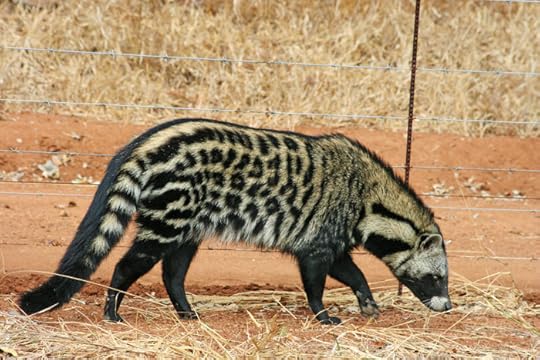
Now, lengthen the legs just a bit, lighten up the build, tilt the topline from front to rear, and poof! Here is an aardwolf:

This is not a hyena, but it’s in the hyena family. Isn’t it cute? I think this is a delightful animal.
Here’s a striped hyena, not the familiar type of hyena everyone knows about, but a very much less common species:

And finally, here’s the common spotted hyena:

Is it easier to see now that all the above animals are in fact kind of similar to each other and not to actual weasels, like this very cute example below?

Now, if you aren’t tired of pictures of things that aren’t weasels, google “linsangs.” Linsangs are arguably the very cutest members of Feloidia.
Please Feel Free to Share:








Recent Reading: Paladin’s Grace by T Kingfisher
Okay, Paladin’s Grace is the second book in this low-stress fantasy romance series T Kingfisher/Ursula Vernon is writing. It’s not a direct sequel to the first (Swordheart), and an author’s note at the book explains that Kingfisher did mean to write a direct sequel, but got distracted by a different idea and wrote this one instead. A direct sequel is still on its way, we are assured, and that’s good to hear because I do want to go on with that other plotline.
In the meantime, the world is getting cluttered! In Swordheart, we encounter one possible magical threat – those horrible parasite things in the woods – that is not really very important to the story at hand, but provides a plausible plot hook for the future. In Paladin’s Grace, we encounter a completely different such threat: those horrible , . . not sure what to call them . . . don’t want to give too much away . . . those things that are responsible for the severed head problem. Not sure which if either of those elements is going to be important later. Both? Neither? If Kingfisher introduces a brand-new magical threat in every installment, count this world out as a potential vacation spot, that’s for sure.
Many more positive plot hooks too, like how about the two other sword-bound people and huh, I wonder if we’ll see Marguerite again, and how about the bird that screams curses in an inhumanly deep voice, and what did happen to Steven’s god anyway? Lots of little (and not-so-little) threads going off in many directions. The more immediate continuing villains in both books are the priests of the Motherhood, just as the Temple of the Rat God are the continuing good guys. A temple of holy lawyers is certainly an interesting twist on fantasy religions, I must say.
Okay: good things:
a) Fun writing style, including more than a little tongue-in-cheek humor.
b) A thread of grotesque horror. It’s getting easier to see the similarity between the T Kingfisher who’s writing these fantasy romances and the T Kingfisher who wrote The Twisted Ones. I like this because it’s one of the things that keeps the stories from being too silly.
c) A clever plot that has enough unexpected moments to be fun.
d) Characters that add enough depth to keep the stories above the level of pure froth. Again, that’s good for me since I don’t personally like stories that descend too far into silliness.
Steven, the paladin of the story, has this great backstory – his god died or at least disappeared, and all the holy berserkers that belonged to that order went crazy and started slaughtering everyone around them and couldn’t stop. Obviously some of them got stopped; seven are left and they’ve put themselves in service to the Temple of the Rat for various good reasons. That was three years ago. Now, in this story, Steven encounters Grace, a socially awkward perfumer whose unusually acute and highly trained sense of smell is central to the story. She has problems. Events unroll from there.
Many excellent secondary characters, particularly the Bishop and Istvan and Marguerite and Zale. I think the last is the only continuing character, but it’s pretty clear that Marguerite is most likely going to appear again, perhaps under a different name. I mean, surely Kingfisher has more in mind for her, given the peculiar revelations in this book? I hope the Bishop reappears too, preferably in an important role. And all the paladins, at least in minor roles. Just a great ensemble of secondary characters here.
e) I loved the technical details about perfumes and I loved how important the sense of smell was to the story.
Annoying things:
a) It would be nice to use the word “lie” as appropriate rather than unnecessarily using “lay.” Not to belabor the point, but I can’t be the only person who’s corrected that in enough student papers to flinch when I see the same mistake in published work.
b) A civet is NOT A WEASEL.
Just in case anyone reading this has any of the following animals in a WIP, let me just mention: Carnivora breaks into two suborders or superfamilies – subclades, anyway – called Caniformia and Feliformia. You can certainly think of them as the Dog Superfamily and the Cat Superfamily.
The Dog Superfamily diversified mainly in the New World and includes dogs, bears, raccoons and raccoon relatives (coati, oligo, kinkajou, cacomistle, ringtail), and the weasel bunch (weasels, wolverines, skunks, badgers, ratels, otters). Also all the pennipeds – seals, sea lions, and walruses.
The Cat Superfamily diversified mainly in the Old World and includes cats, hyenas, aardwolves, mongooses, meerkats, genets, linsangs, the fossa, and civets.
I am aware that a lot of mongooses and other animals in that group look a lot like weasels in that they all have long bodies, flexible spines, and short legs. Many of the procyanids – the raccoon relatives – fit the same body type. It’s a highly functional design and animals of that basic type were ancestral to the whole Carnivore order. Basic appearance notwithstanding, calling a civet a weasel is exactly like referring to a hyena as a type of weasel, or for that matter it’s like referring to a cougar as a type of weasel. It makes people who know better flinch. Personally, I don’t think it’s soooo much trouble to google basic facts about civets at some point if you’re going to drop one into your novel.
This goes for every animal less familiar than, say, a wolf. If you’re going to make an animal important in your novel, please look it up on Wikipedia first. I remember some series or other that kept referring to otters as “rats” and that was even more annoying, since obviously the weasel family is not at all closely related to rodents.
Okay, moving on:
c) Probably much more important to 99.9% of readers, WOW, is it blindingly obvious who really poisoned the crown prince or what? I don’t care how unworldly Grace is, I’m telling you, blindingly obvious. As you all probably know, I have real problem with protagonist stupidity and I have to say, this was a stellar example.
This moment occurs late enough in the story that the reader is going to be invested and isn’t likely to throw the book across the room and quit, even if, like me, they simply detest stupid protagonists. Grace is soooo socially awkward that to a certain (limited) extent that excuses her failure to grasp the blindingly obvious even when it’s being hammered down on top of her with a sledgehammer. I’m actually more shocked that Zale didn’t twig well in advance of The Big Reveal, because there’s no possible excuse for that failure.
Overall:
A fun, enjoyable story that is generally but not entirely light. Heavy on the classic romance beats, which is excellent if that’s what you’re looking for. Plenty of technical details about perfume, which is great. Reminds me a bit of Imperial Purple by Gillian Bradshaw, though that one is of course not as light or humorous. I liked Paladin’s Grace quite a bit, though not as much as Swordheart, and I’ll be happy to go on with the series.
Please Feel Free to Share:








February 21, 2020
Shakespeare retellings
From Book Riot: THE 10 BEST HAMLET RETELLINGS, RANKED
There are that many Hamlet retellings? I had no idea.
As always with Book Riot posts, I half expect to see Watership Down on this list, but I expect that will never happen again. Probably everything on this list is an actual retelling of Hamlet. But let’s see.
Okay, their first choice: Foul is Fair.
Jade, Jenny, Mads, and Summer rule their glittering LA circle. Untouchable, they have the kind of power other girls only dream of—until the night of Jade’s sweet sixteen, when they crash a St. Andrew’s Prep party. The night the golden boys choose Jade as their next target. They picked the wrong girl. Sworn to vengeance, Jade transfers to St. Andrew’s Prep. She plots to destroy each boy, one by one. And she and her coven have the perfect way in: a boy named Mack, whose ambition could turn deadly. Golden boys beware: something wicked this way comes.
That does not sound at all like Hamlet to me. In fact, “Foul is fair” is part of a quote from the witches in Macbeth, not a line from Hamlet. Same with “something wicked this way comes,” that’s from Macbeth as well. I have to say, this sure sounds like it’s supposed to be Macbeth-flavored rather than Hamlet-flavored. Nothing about the scenario really evokes either play. At least, I don’t see how that description fits either one. Except the vengeance thing. I guess that could fit Hamlet.
Well, without reading it, I don’t know.
Okay, the rest of them do look very Hamlet-adjacent. Several are movies, not novels, not that there’s anything wrong with that.
Oh, Here’s the choose-your-own-adventure version by Ryan North! The Romeo and Juliet one he did was quite funny.
The Dead Father’s Club sounds pretty good, and also wow, what a similar title to The Dead Girls Club in the previous post. This one sure got a better cover design:
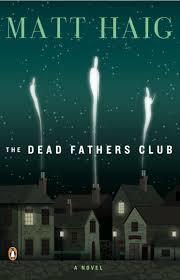
You can actually read the title quite clearly! Also, I like the ghosts-as-smoke thing and the whole cover in general. The description:
In this 2006 novel, the character of Hamlet is reimagined as Phillip, a young 11-year-old boy who is visited by the ghost of his dead father. Phillip’s father says that he was murdered by his brother Alan. Now Phillip must avenge his father’s murder and prevent Alan from taking over the family pub. If Phillip is unable to avenge his father’s death by murdering Alan within the next three months, Phillip’s father will fall prey to the Terrors.
Here’s one which gets pretty creative:
Nutshell by Ian McEwan.
Ian McEwan’s retelling of Shakespeare’s Hamlet is narrated by a fetus. This fetus witnesses a classic tale of murder and deceit from within the womb: Trudy has betrayed her husband John and is sleeping with John’s brother Claude. Together, John and Claude have hatched a plan to rid themselves of John forever. But what can a poor fetus do to stop the murder of his father other than kicking his mom from inside her womb every now and then?
Huh. I certainly wouldn’t have thought of that.
Personally, I’m not the world’s biggest fan of Shakespeare’s tragedies. I guess I should look up retellings of the comedies! Except not The Taming of the Shrew. Wow, I have seen so many re-makes of that one — remember the one from the tv show Moonlighting? But I am not crazy about the original play and I guess I got tired of re-makes of it.
Anybody know of a good retelling of one of the other comedies?
Please Feel Free to Share:











